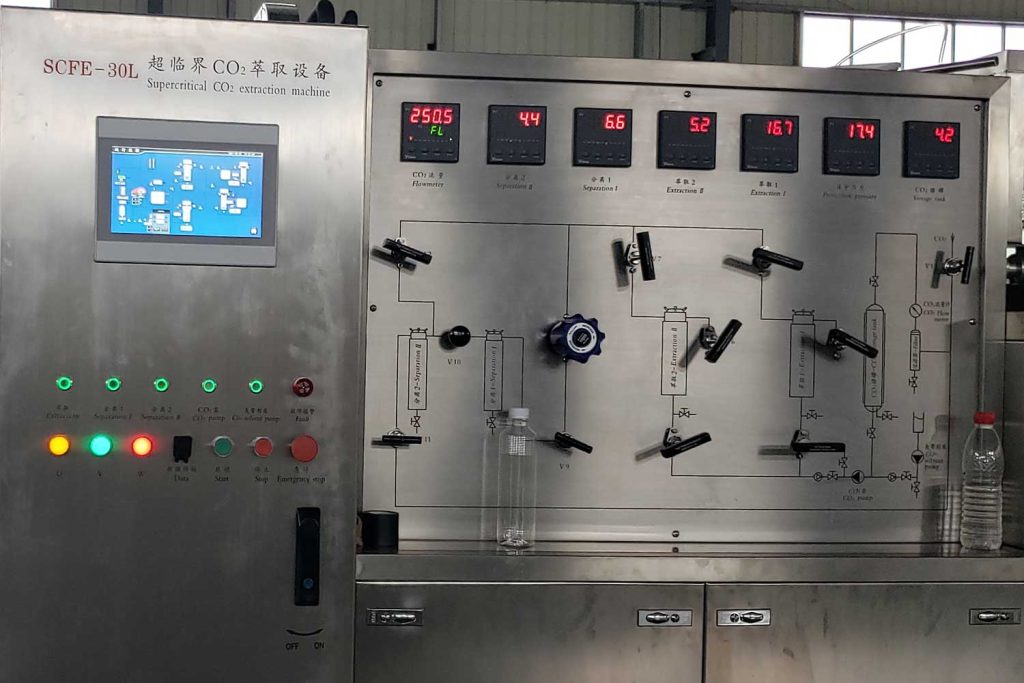Supercritical CO2 fluid extraction has gained immense popularity in various industries for its efficiency in extracting compounds from natural sources. One critical aspect of this technology is the construction of extraction equipment, often made of alloy steel.
Supercritical CO2 fluid extraction is a cutting-edge technology used to extract valuable compounds from various natural sources, including botanicals, herbs, and even industrial applications. This process involves exposing supercritical carbon dioxide to the desired source material, which allows for the efficient extraction of essential oils, flavors, fragrances, and other valuable components.
Selecting the right material for supercritical CO2 extraction machine is crucial for ensuring the safety, efficiency, and longevity of the extraction process. While several materials can be used, alloy steel has emerged as a preferred choice for several compelling reasons.
Supercritical CO2 fluid extraction equipment is generally made of alloy steel, that is, some alloy elements are added to carbon steel, such as Mn, Gr, Ni, Mo, Ti, Al, etc.
Commonly used steels for pressure vessels include the following:
Low alloy steel
Low alloy steel is based on ordinary carbon steel with a small amount of alloying elements added (total alloying elements <5%) to improve strength, toughness, corrosion resistance, high temperature and low temperature resistance and other properties. 16Mn is the most commonly used type of ordinary low alloy steel, with a carbon content of about 0.16% and a Mn content of about 1.5%.
The strength of 16Mn is significantly higher than that of Q235-A, and the yield limit is increased by 30% to 40%. When used to make pressure vessels or stressed parts, the mass can be reduced by 30% to 40%. Another outstanding advantage of 16Mn is that it has high impact toughness at low temperatures and can be used at temperatures of -40°C. The welding performance of 16Mn is also better. 15Mni and 15MnV are also commonly used low alloy steels.
Alloy steel
The total amount of alloying elements in alloy steel is >5%, and the grade composition is the same as that of low alloy steel. Its comprehensive mechanical properties, heat resistance, and corrosion resistance are better than carbon steel, and the corresponding price is also more expensive. It is generally used in high-pressure vessels and various stressed parts.

Advantages of Alloy Steel
Alloy steel offers a unique combination of properties that make it highly suitable for supercritical CO2 fluid extraction equipment:
- Corrosion Resistance: Alloy steel is inherently resistant to corrosion, which is vital when dealing with aggressive substances like supercritical CO2. This resistance ensures that the equipment remains durable over time, even with continuous exposure to high-pressure CO2.
- High Strength: Supercritical CO2 fluid extraction involves operating at elevated pressures and temperatures. Alloy steel’s high tensile strength makes it capable of withstanding these conditions without deformation or failure.
- Tolerant to Extreme Temperatures: The extraction process may require varying temperatures, ranging from extremely low to high values. Alloy steel can maintain its structural integrity under these temperature extremes, ensuring consistent performance.
- Non-Reactivity: Alloy steel does not react with carbon dioxide, ensuring that the extraction process remains uncontaminated. This quality is crucial for maintaining the purity of the extracted compounds.
Stainless steel or stainless acid-resistant steel
The main alloying elements in stainless steel are Cr and N, which are used to improve its corrosion resistance. Some add a small amount of Mo and Ti to improve the resistance to chloride ions and intergranular corrosion.
Stainless steel is divided into three categories according to its metallographic structure
- Austenitic stainless steel has the best heat resistance and is the most widely used. It has certain strength and toughness, is resistant to high temperatures, and has no pollution to the medium. It is the most commonly used material in supercritical CO2 fluid extraction.
- Ferritic stainless steel has poor corrosion resistance and is still valuable for less corrosive media. The main ones are: 0Cr13, which is generally used in equipment resistant to water vapor, ammonia bicarbonate, and hot sulfur-containing corrosives; 0Cr17Ti, which is mainly used in equipment in the nitric acid industry and food factories and artificial fiber factories.
- Martensitic stainless steel has poor corrosion resistance but high strength, such as 1Cr13 and 2C13, which are mainly used for parts that resist weak corrosive media and have high toughness and impact resistance.
Conclusion
In the world of supercritical CO2 fluid extraction, the choice of material for equipment construction plays a pivotal role in determining the process’s success. Alloy steel stands out as a preferred material due to its exceptional corrosion resistance, high strength, and tolerance to extreme temperatures.
The specific composition of alloy steel can be tailored to meet the unique requirements of supercritical CO2 fluid extraction processes. By adjusting the alloy’s composition, engineers can optimize properties such as corrosion resistance, strength, and temperature tolerance to match the intended application.
Engineers can further fine-tune the alloy composition to meet specific extraction needs, ensuring efficient and reliable operations. While alloy steel may pose initial cost and manufacturing challenges, its long-term benefits far outweigh these considerations, making it the material of choice for supercritical CO2 fluid extraction equipment.